Come join us now, and enjoy playing your beloved music and browse through great scores of every level and styles!
Can’t find the songbook you’re looking for? Please, email us at: sheetmusiclibrarypdf@gmail.com We’d like to help you!
Table of Contents
What is a Jazz Standard?
A jazz standard is a musical theme that has acquired a certain notoriety in the jazz genre, which is known by many musicians and which has been the subject of numerous versions, interpretations and improvisations, and which is frequently used in jam sessions and performances.
There are standards from all eras of jazz, such as ‘When the Saints Go Marching In’, ‘I Got Rhythm’ or ‘How High the Moon’, ‘Take the ‘A’ Train’ to cite examples of the hot, swing and bop.
Many of the best-known standards were composed for films, or come from the so-called Great American Songbook, and have been incorporated into the genre, such as, for example, ‘Summertime’, by George Gershwin, while, for example, ”Round Midnight’, by Thelonious Monk, has been covered by, among others, Cootie Williams, Dizzy Gillespie, Art Pepper, and Miles Davis.
Best Sheet Music download from our Library.

The most recorded standard composed by a jazz musician, and one of the most covered songs of all time, is Duke Ellington’s and Juan Tizol’s “Caravan” with over 500 uses.
Originally, the most recorded jazz standard was W. C. Handy’s “St. Louis Blues” for over 20 years from the 1930s onward, after which Hoagy Carmichael’s “Stardust” replaced it. Following this, the place was held by “Body and Soul” by Johnny Green.
Please, subscribe to our Library.
If you are already a subscriber, please, check our NEW SCORES’ page every month for new sheet music. THANK YOU!
Before 1920
At the beginning of the 20th century, jazz was still considered dance music. The first Dixieland groups remained influenced by this image: King Oliver and his Creole Jazz Band, the New Orleans Rhythm Kings and many other groups included Tin Pan Alley in their repertoires, and record companies sometimes dictated the list of titles that must be recorded by their artists.
Certain imposed songs have thus become standards, such as Darktown Strutters’ Ball or (Back Home Again in) Indiana, recorded by the Original Dixieland Jass Band at Columbia Records in 1917.
Also, among the standards of this era are the songs After You’ve Gone (Turner Layton and Henry Creamer, 1918) and Some of These Days (Sophie Tucker, 1910).
The 1920s
The Jazz Age began in the United States in the 1920s. Jazz became popular there, even though the older generation considered this music immoral and endangering their cultural values.
The first artist who allowed himself to freely choose his titles was Louis Armstrong, who popularized many standards during the years 1920 to 19301. The popular tunes of the 1920s were songs like Sweet Georgia Brown, Dinah or Bye Bye Blackbird.
Some compositions from this era written by jazz musicians have become standards such as Honeysuckle Rose (1928) and Ain’t Misbehavin’ (1929) by Fats Waller. The song Stardust by Hoagy Carmichael and Mitchell Parish is the most recorded jazz standard of the 1920s. Others are written by Broadway composers such as The Man I Love by George and Ira Gershwin (1924), Blue Skies by Irving Berlin (1927), or What Is This Thing Called Love? by Cole Porter (1927).
However, it was not until the 1930s that jazz musicians became comfortable with the complex melodies and sophisticated harmonic grids of Broadway tunes, and used them regularly in their repertoires.
The 1930s
Broadway contributed some of the most popular standards of the 1930s, including the famous Summertime from the comedy Porgy and Bess by George and Ira Gershwin (1935), My Funny Valentine by Richard Rodgers and Lorenz Hart (1937), All the Things You Are by Jerome Kern and Oscar Hammerstein II (1939), and Body and Soul by Johnny Green (1930). These standards are among the most recorded.
The 1930s saw swing establish itself in American music. Duke Ellington and his musicians composed many themes which would become jazz standards: It Don’t Mean a Thing (If It Ain’t Got That Swing) (1932), Sophisticated Lady (1933), Caravan (1936) among the most famous.

The swing era (1935–1946) is that of the greatest big bands, such as those of Benny Goodman and Count Basie, who also participated in the repertoire of jazz standards.
The 1940s
New themes became popular, such as Cotton Tail by Duke Ellington (1940) or Take the ‘A’ Train by Billy Strayhorn (1941). The Second World War was a difficult time for big bands, and small groups developed.
The arrival of bebop brought out a new audience sensitive to sophisticated harmonies, fast tempos, and the virtuosity of the musicians. Their repertoires largely use the standards of the 1930s, but their compositions will also enter the list of standards: Salt Peanuts (1941) and A Night in Tunisia (1942) by Dizzy Gillespie, Anthropology (1946), Yardbird Suite (en) ( 1946), Scrapple from the Apple (1947) by Charlie Parker, or ‘Round Midnight (1944) by Thelonious Monk.
The 1950s and beyond
Some modal jazz recordings became popular in the late 1950s, such as the albums Kind of Blue by Miles Davis in 1959 with the compositions All Blues and So What, Impressions (en) by John Coltrane in 1963, or Maiden Voyage by Herbie Hancock in 1965.
In the mid-1960s, Miles Davis’ second major quintet with Wayne Shorter and Herbie Hancock recorded a series of albums which contained standards such as Footprints (Wayne Shorter, 1966) and Freedom Jazz Dance (Eddie Harris, 1966).
At the end of the 1950s, bossa nova appeared in Brazil, a mixture of samba and jazz, made popular by João Gilberto, Antônio Carlos Jobim and Luiz Bonfá. Gilberto and Stan Getz launched this trend in the United States in 1964 with the famous Getz/Gilberto album. Among the standards of the genre are compositions by Bonfá (Manhã de Carnaval, 1959), Marcos Valle (Summer Samba, 1966), and numerous songs by Jobim such as Desafinado (1959), The Girl from Ipanema (1962), Corcovado (1962).
In the mid-1970s, jazz fusion appeared, which was a mixture of jazz, funk and rock. Joe Zawinul with Weather Report, Chick Corea with Return to Forever, Herbie Hancock with The Headhunters, or John McLaughlin’s Mahavishnu Orchestra considerably broaden the jazz audience, and some of their successes have become standards: Spain (en) by Chick Corea (1971), Chameleon by Hancock (1973), and Birdland by Joe Zawinul (1977).

Jazz standards
Musical compositions that have become jazz standards.
Irving Berlin – Alexander’s Ragtime Band [1911]
“Alexander’s Ragtime Band” is a Tin Pan Alley song by American composer Irving Berlin released in 1911 and is often inaccurately cited as his first global hit. Although not a traditional ragtime song, Berlin’s jaunty melody nonetheless “sold a million copies of sheet music in 1911, then another million in 1912, and continued to sell for years afterward.
It was the number one song from October 1911 through January 1912.” The song might be regarded as a narrative sequel to “Alexander and His Clarinet”, which Berlin wrote with Ted Snyder in 1910. The earlier song is mostly concerned with a reconciliation between an African-American musician named Alexander Adams and his flame Eliza Johnson, but also highlights Alexander’s innovative musical style.
Berlin’s “Alexander’s Ragtime Band” was introduced to the American public by vaudeville comedienne Emma Carus, “one of the great stars of the period.” A popular singer in the 1907 Ziegfeld Follies and Broadway features, Carus was a famous contralto of the vaudeville era, renowned for her “low bass notes and high lung power.”
Carus’ brassy performance of the song at the American Music Hall in Chicago on April 18, 1911, proved to be well-received, and she toured other metropolises such as Detroit and New York City with acclaimed performances that featured the catchy song. The song as comically recorded by American singing duo Arthur Collins and Byron G. Harlan became the number one hit of 1911.
Nearly two decades later, jazz singer Bessie Smith recorded a 1927 cover, which became one of the hit songs of that year. The song’s popularity re-surged in the 1930s with the release of a 1934 close harmony cover by the Boswell Sisters, and a 1938 musical film of the same name starring Tyrone Power and Alice Faye. The song was covered by a variety of artists such as Al Jolson, Billy Murray, Louis Armstrong, Bing Crosby, and others. Within fifty years of its release, the song had at least a dozen hit covers.
Etta James – Stormy Weather
From the album is At Last.
Search in our Library by author, or song name.
| Artist or Composer / Score name | Cover | List of Contents |
|---|---|---|
| Amy Winehouse Half Time | Amy Winehouse Half Time | |
| Amy Winehouse I Heard Love Is Blind |
 |
|
| Amy Winehouse Just Friends |
 |
|
| Amy Winehouse Rehab |
 |
|
| Amy Winehouse Stronger Than Me | Amy Winehouse Stronger Than Me | |
| Amy Winehouse What Is It About Men | Amy Winehouse What Is It About Men | |
| Amy Winehouse You Know Im No Good |
 |
|
| An affair to remember (Harry Warren) | ||
| An American In Paris An George Gershwin (Concert Band)An American In Paris An George Gershwin (Concert Band) Arr. by Naohiro Iwai |
 |
|
| An American Tail – The Marketplace – James Horner | ||
| An Introduction To Bach Studies (eBook) |
 |
|
| An Irish Blessing (Musescore File).mscz | ||
| An Irish Blessing (SATB) Choral | An Irish Blessing (SATB) | |
| Anais Mitchell Hadestown (The Broadway Musical) Piano Vocal Selections |
 |
Anais Mitchell Hadestown (The Broadway Musical) Piano Vocal Selections |
| Analisis musical claves para entender e interpretar la Música (M. y A. Lorenzo) Español |
 |
|
| Analysis Of Tonal Music An Schenkerian Approach Allen Cadwallader and David Gagné (Book) |
 |
|
| Analyzing Bach Cantatas by Eric Chafe (eBook) |
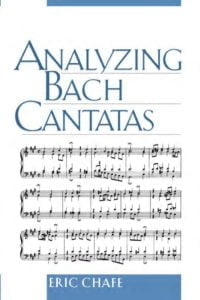 |
|
| Analyzing Schubert by Suzannah Clark (Cambridge Un. Press) (eBook) |
 |
|
| Analyzing The Music Of Living Composers (And Others) |
 |
|
| Analyzing The Music Of Living Composers And Others (Book) by Jack Boss, Brad Osborn, Tim S. Pack |
 |
|
| Anastacia Not That Kind Songbook |
 |
Anastacia songbook |
| Anastasia Once Upon A December arr. by John Brimhall (Piano Solo 2 Versions Easy And Intermediate) |
 |
|
| Anastasia Sheet Music songbook Piano & vocal |
 |
Anastasia Sheet Music songbook Piano & vocal |
| Anastasia The New Broadway Musical |
 |
Anastasia The New Broadway Musical Stephen Flaherty Lynn Ahrens |
| Anatomy of a lick Essential Jazz lines by Matt Warnock Guitar (All Complete 5 Volumes 1 to 5) |
 |
Anatomy of a lick Essential Jazz lines by Matt Warnock Guitar Contents |
| Ancora ancora ancora (Mina) | ||
| Ancora qui (Django Unchained) Elisa – Ennio Morricone | ||
| And the Waltz goes on (Anthony Hopkins) | ||
| Andante (from String Quartet op. 22) P. I. Tchaikovsky | ||
| Anderson Freire – So Voce Piano |
 |
|
| Andras Schiff – Music Comes Out Of Silence Book |
 |
|
| Andre Gagnon – Le Reve De L’automne (sheet music Collection) |
 |
Andre Gagnon – Le Reve De L’automne (sheet music Collection) |
| Andre Gagnon – Les Jours Tranquilles | Andre Gagnon – Les Jours Tranquilles | |
| Andre Gagnon – Meguriai |
 |
|
| Andre Gagnon – Nelligan |
 |
|
| Andre Gagnon – Petite Nostalgie |
 |
|
| Andre Gagnon – Reves D’Automne | Andre Gagnon – Reves D’Automne | |
| Andre Gagnon – The Very Best Of Andre Gagnon (Sheet Music Songbook) |
 |
Andre Gagnon – The Very Best Of Andre Gagnon (Sheet Music Songbook) |
| Andre Gagnon Ciel D’Hiver |
 |
|
| Andre Gagnon Entre Le Boeuf et l’Ane Gris Musique Traditionelle |
 |
|
| André Gagnon L’air Du Soir |
 |
|
| Andre Gagnon Neiges |
 |
|
| André Gagnon Nelligan |
 |
|
| André Gagnon Origami |
 |
|
| Andre Gagnon Pensées Fugitives |
 |
|
| André Gagnon Piano Solitude |
 |
Gagnon, André Piano Solitude |
| Andre Gagnon Prologue |
 |
|
| André Gagnon Selection Speciale de chansons (partitions musicales) |
 |
André Gagnon Selection Speciale de chansons (partitions musicales) |
| André Gagnon Un Piano Sur La Mer (Piano Solo Partition Sheet Music) | Gagnon André Un Piano Sur La Mer (Piano Solo Partition Sheet Music) | |
| Andre Popp Paul Mauriat Love Is Blue Piano Solo Arr. |
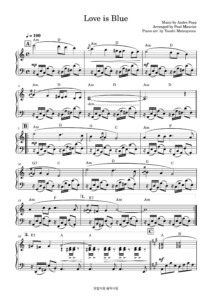 |
|
| André Previn – Play Like André Previn no. 1 |
 |
Andre Previn sheet music |
| Andre Previn – The Genius of (Piano Solos sheet music) |
 |
The genius of André Previn |
| Andre Rieu La Vie Est Belle (Songbook Collection As Performed By André Rieu) |
 |
Andre Rieu La Vie Est Belle (Songbook Collection As Performed By André Rieu) |
| Andrea Bocceli – Time To Say Goodbye | ||
| Andrea Boccelli – Time To Say Goodbye |
 |
|
| Andrea Bocelli Romanza songbook (Guitar & Voice) |
 |
Andrea Bocelli Romanza songbook |
| Andrea Bocelli – Anthology (songbook) |
 |
 |
| Andrea Bocelli – Con te partiro (Time to say Goodbye) Piano Solo arr | Andrea Bocelli – Con te partiro (Time to say Goodbye) Piano Solo | |
| Andrea Bocelli – Con te partiro (Time to say Goodbye) Piano Solo.mscz | ||
| Andrea Bocelli – The Best Of Songbook |
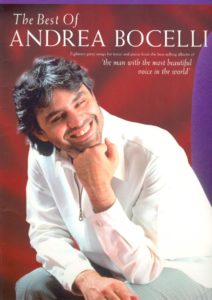 |
Andrea Bocelli best of |
| Andrea Bocelli Celine Dion The Prayer Easy Piano And Vocal By David Foster, Carole Bayer Sager, Alberto Testa And Tony Renis |
 |
|
| Andrea Bocelli Celine Dion – The Prayer – Easy Piano and Vocal by David Foster, Carole Bayer Sager, Alberto Testa and Tony Renis.mscz | ||
| Andrea Bocelli Cieli Di Toscana (Piano, guitar & Vocal) |
 |
Andrea Bocelli Cieli Di Toscana |
| Andrea Bocelli Cinema Vocal Piano |
 |
Andrea Bocelli Cinema Vocal Piano |
| Andrea Bocelli Si Piano Vocal Guitar |
 |
Andrea Bocelli Si Piano Vocal Guitar |
| Andrea Bocelli Sogno Songbook |
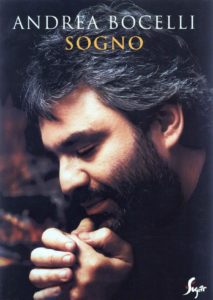 |
Andrea Bocelli sogno |
| Andrea Bocelli The Best Of Andrea Bocelli Vivere Vocal Piano |
 |
Andrea Bocelli The Best Of Andrea Bocelli Vivere Vocal Piano |
| Andrea Bocelli The Best Of Piano Vocal |
 |
Andrea Bocelli The Best Of Piano Vocal |
| Andrea Bocelli The Prayer |
 |
|
| Andrea Morricone – Nuovo Cinema Paradiso – Love Theme |
|
|
| Andrea Vanzo Autumn Intro |
 |
|
| Andrea Vanzo Intimacy | Andrea Vanzo Intimacy | |
| Andrea Vanzo Les Madeleines |
 |
|
| Andrea Vanzo Song Of Storms From The Legend Of Zelda Ocarina Of Time Song Of Storms | Andrea Vanzo Song Of Storms From The Legend Of Zelda Ocarina Of Time Song Of Storms | |
| Andrea Vanzo Spring |
 |
|
| Andrea Vanzo Valzer D’inverno | Andrea Vanzo Valzer D’inverno | |
| Andrea Vanzo Valzer d’Inverno |
 |
|
| Andrés Segovia Classic Album For Guitar Volume 2 |
 |
Andrés Segovia Classic Album For Guitar Volume 2 |
| Andrés Segovia Classic Album For Guitar Volumes 1 to14 |
 |
Andrés Segovia Classic Album For Guitar Volumes 1 to14Andrés Segovia Classic Album For Guitar Volume 2 |
| Andres Segovia Collection Pieces For Solo Guitar |
 |
Andres Segovia Collection Pieces For Solo Guitar |
| Andres Segovia Obras Para Guitarra Vol 1 Preludios Y Estudios |
 |
Andres Segovia Obras Para Guitarra Vol 1 Preludios Y Estudios |
| Andres Segovia Obras Para Guitarra Vol 2 23 Canciones Populares Del Mundo |
 |
Andres Segovia Obras Para Guitarra Vol 2 23 Canciones Populares Del Mundo |
| Andres Segovia- Transcripciones Obras Para Guitarra Vol 3 |
 |
Andres Segovia- Transcripciones Obras Para Guitarra Vol 3 |
| Andrew Gordon The Blues Play A Long and Solos Collection for Guitar Beginner Series |
 |
|
| Andrew Green Jazz Guitar Technique |
 |
|
| Andrew Hill 21 Piano Compositions |
 |
Andrew Hill 21 Piano Compositions |
| Andrew Lloyd Webber – All I Ask of You (The Phantom of the Opera) |
 |
|
| Andrew Lloyd Webber – Angel Of Music (Piano, Vocal, Guitar chords) | Andrew Lloyd Webber – Angel Of Music (Piano, Vocal, Guitar chords) | |
| Andrew Lloyd Webber – CATS (Piano & Vocal score) |
 |
Andrew Lloyd Webber – CATS (Piano & Vocal score) |
| Andrew Lloyd Webber – Jesus Christ Superstar (Musical Excerpts Complete Libretto) Lyrics by Tim Rice |
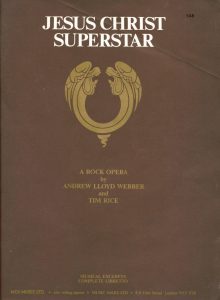 |
 |
| Andrew Lloyd Webber – Joseph And The Amazing Technicolor Dreamcoat The Musical Full Score |
 |
|
| Andrew Lloyd Webber – Joseph And The Amazing Technicolor Dreamcoat The Musical Vocal Selections |
 |
Andrew Lloyd Webber – Joseph And The Amazing Technicolor Dreamcoat The Musical Vocal Selections |
| Andrew Lloyd Webber – Love Never Dies (Piano Book) |
 |
Andrew Lloyd Weber – Love Never Dies (Piano Book) |
| Andrew Lloyd Webber – Love Never Dies Full Vocal Score (Andrew Lloyd Webber) |
 |
Love Never Dies Full Vocal Score |
| Andrew Lloyd Webber – Memory (from CATS) Piano Vocal with lyrics |
 |
|
| Andrew Lloyd Webber – Requiem (the musical) Piano Vocal Score |
 |
|
| Andrew Lloyd Webber – School of Rock |
 |
Andrew Lloyd Webber – School of Rock |
| Andrew Lloyd Webber – The Phantom Of The Opera | ||
| Andrew Lloyd Webber – Unmasked A Memoir (Book) |
 |
|
| Andrew Lloyd Webber – Unmasked The Platinum Collection (Musicals) Deluxe Edition |
 |
Andrew Lloyd Webber – Unmasked The Platinum Collection |
| Andrew Lloyd Webber “By Jeeves”, the musical |
 |
|
| Andrew Lloyd Webber And Glenn Slater Til I Hear You Sing From Love Never Dies | Andrew Lloyd Webber And Glenn Slater Til I Hear You Sing From Love Never Dies | |
| Andrew Lloyd Webber Another Suitcase In Another Hall from Evita | Andrew Lloyd Webber Another Suitcase In Another Hall from Evita | |
| Andrew Lloyd Webber Anthology |
 |
Webber, Andrew Lloyd – Antholog |
| Andrew Lloyd Webber Cats Vocal Score Piano Reduction |
 |
Andrew Lloyd Webber Cats Vocal Score Piano Reduction |
| Andrew Lloyd Webber Evita Andrew Lloyd Webber and Tim Rice Piano Vocal Guitar chords Selections from the OST |
 |
Andrew Lloyd Webber Evita Andrew Lloyd Webber and Tim Rice Piano Vocal Guitar chords Selections from the OST |
| Andrew Lloyd Webber For Piano Piano Solos The Musicals |
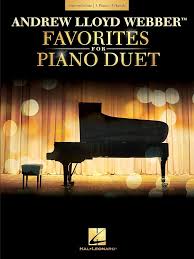 |
Andrew Lloyd Webber Musical Favorites For Piano Duet Early Intermediate Level |
| Andrew Lloyd Webber Jesus Christ Superstar (Broadway) (Musical) |
 |
Andrew Lloyd Webber Jesus Christ Superstar (Broadway) |
| Andrew Lloyd Webber Jesus Christ Superstar Tim Rice (Deutsche Texte) | Andrew Lloyd Webber Jesus Christ Superstar Tim Rice (Deutsche Texte) | |
| Andrew Lloyd Webber Masquerade from The Phantom of the Opera for Guitar TABS | Andrew Lloyd Webber Masquerade from The Phantom of the Opera for Guitar TABS | |
| Andrew Lloyd Webber Memory (from Cats the Musical) for Guitar TABS | Andrew Lloyd Webber Memory (from Cats) for Guitar TABS | |
| Andrew Lloyd Webber Musical Favorites For Piano Duet Early Intermediate Level |
 |
Andrew Lloyd Webber Musical Favorites For Piano Duet Early Intermediate Level |
| Andrew lloyd Webber Pie Jesu Piano Solo from the musical REQUIEM |
 |
|
| Andrew Lloyd Webber Pro Vocal Womens Edition (Musicals) |
 |
Andrew Lloyd Webber Pro Vocal Womens Edition |
| Andrew Lloyd Webber Sheet Music Collection, The – Andrew Lloyd Webber (Musicals) |
 |
Andrew Lloyd Webber Sheet Music Collection, The – Andrew Lloyd Webber sheet music |
| Andrew Lloyd Webber Solos Arr Phillip Keveren The Phillip Keveren Series Piano Solo (Musicals) |
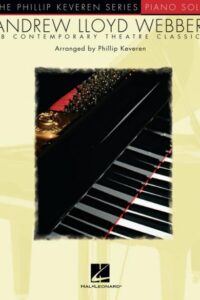 |
Andrew Lloyd Webber Solos Arr Phillip Keveren The Phillip Keveren Series Piano Solo |
| Andrew Lloyd Webber Starlight Express (Musicals) |
 |
Starlight Express – Andrew Lloyd Webber Starlight Express |
| Andrew Lloyd Webber Sunset Boulevard (Revised Broadway Version of the Musical) Piano & Vocal Score |
 |
Andrew Lloyd Webber Sunset Boulevard (Revised Broadway Version) Piano & Vocal Score |
| Andrew Lloyd Webber Sunset Boulevard Piano Vocal Selections |
 |
Andrew Lloyd Webber Sunset Boulevard Piano Vocal Selections (Contents list) |
| Andrew Lloyd Webber Super Easy Songbook Piano Vocal Guitar Chords (Musicals) |
 |
Andrew Lloyd Webber Super Easy Songbook Piano Vocal Guitar Chords |
| Andrew Lloyd Webber Tell Me On A Sunday Piano Vocal Guitar (The Musical) | Andrew Lloyd Webber Tell Me On A Sunday Piano Vocal Guitar | |
| Andrew Lloyd Webber The Best of Andrew Lloyd Webber Easy Piano (Musicals) |
 |
Andrew Lloyd Webber The Best of Andrew Lloyd Webber Easy Piano (Musicals) |
| Andrew Lloyd Webber The Music Of The Night |
 |
|
| Andrew Lloyd Webber The Phantom of the Opera for Guitar TABS (Musical) | Andrew Lloyd Webber The Phantom of the Opera for Guitar TABS | |
| Andrew Lloyd Webber The Phantom Of The Opera Movie Selections (Musical) |
 |
Andrew Lloyd Webber The Phantom Of The Opera Movie Selections |
| Andrew Lloyd Webber Think of me (The Phantom of the Opera) | Andrew Lloyd Webber Think Of Me | |
| Andrew Lloyd WebberThe Phantom of the Opera (Piano Vocal & Guitar) Songbook |
 |
 |
| Andrew York Best Guitar Solo Songbook Real Acoustic Guitar |
 |
Andrew York Best Guitar Solo Songbook Real Acoustic Guitar |
| Andrew York Guitar Works Anthology |
 |
Andrew York Guitar Works Anthology Contents (and more) |
| Andrew York Home (Guitar Contemporary Music) | Andrew York Home (Guitar Contemporary Music) | |
| Andrew York Imaginary March For Guitar | Andrew York Imaginary March For Guitar | |
| Andrew York Little One For Guitar | Andrew York Little One For Guitar | |
| Andrew York Quiccan For Four Guitars |
 |
|
| Andrew York Three Dimensions For Solo Guitar |
 |
Andrew York Guitar Works Anthology Contents (and more) |
| Androgyne (Mario Leblanc) | ||
| Andy Timmons Anthology |
 |
|
| Andy Jaffe – Jazz Harmony |
 |
Andy Jaffe – Jazz Harmony |
| Andy Laverne – Tons Of Runs For The Contemporary Pianist |
 |
andy laverne tons of runs contemporary pianist |
| Andy LaVerne – Vol. 85 Tunes You Thought You Knew | Andy LaVerne sheet music | |
| Andy Mckee Joyland (Songbook) (Andy Mckee) Guitar TAB |
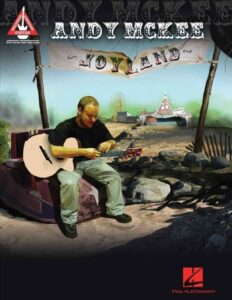 |
Andy Mckee Joyland (Songbook) (Andy Mckee) Guitar TAB |
| Angeles Negros Y Volveré (Alaian Barrière) |
 |
|
| ANGELO BADALAMENTI – (Twin peaks) – Twin Peaks theme easy piano solo | ANGELO BADALAMENTI – (Twin peaks) – Twin Peaks theme | Badalamenti Angelo – Twin Peaks |
| Angelo Badalamenti – Twin Peaks – Love Theme easy piano solo | Badalamenti, Angelo – Twin Peaks – Love Theme | Angelo Badalamenti – Twin Peaks (book) |
| Angelo Badalamenti – Twin Peaks (songbook the music of Twin Peaks) |
 |
Angelo Badalamenti – Twin Peaks (book) |
| Angelo Badalamenti – Twin Peaks Theme (Instrumental) (Musescore File).mscz | ||
| Angelo Badalamenti Twin Peaks – Love Theme (Laura Palmer’s Theme) | Twin Peaks -Love Theme | |
| Angra Rebirth Guitar Songbook |
 |
|
| Angry Birds Theme Song (Piano) |
 |
|
| Anido Maria Luisa Aire Norteno for Guitar Rev Gilardino |
 |
|
| Animal Crossing Christmas Eve |
 |
